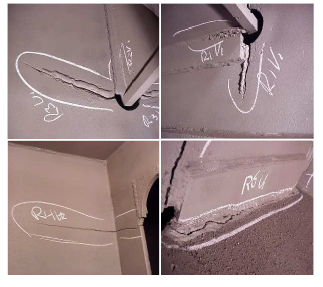WG 189 : Fatigue of Hydraulic Steel Structures

Chair : Dirk Van der Tol (Chair)
Status :
Terms of reference
Hydraulic Structures are subject to varying loads of more or less cyclic character. These loads are primarily generated by differential water heads on, e.g., navigation lock gates, but also by waves, drive system forces and other actions. As a result, the designers must take account of an additional failure mode of these structures – the failure by fatigue.
Until about the 1970’s, fatigue was of minor or no concern for designers, constructors and managers of hydraulic structures. This changed, however, with the following developments:
• Increase of navigation, and higher gate opening and closing frequency;
• Advance of welding and disappearance of riveted steel structures; welded joints are more vulnerable to fatigue;
• Higher demand for infallible, low maintenance hydraulic structures.
A number of serious fatigue damages, particularly to lock gates (see photo), emphasized the need for guidelines in this field. Such guidelines already exist for other steel structures, like bridges, cranes or pressure vessels. They do not cover, however, all specific operation conditions and demands that apply to hydraulic structures.

To fill this gap, the PIANC Inland Navigation Commission (INCOM) set up a Working Group that compiled, investigated and assessed the international expertise on the fatigue of hydraulic structures. This report is a result of the Working Group activities. It aims to offer comprehensive guidelines in the field of fatigue to all professionals involved in design, construction and management of hydraulic steel structures.
List of Members
The Netherlands
Dirk Van der Tol (Chair)
Richard Daniel
Gerard Bouwman
Dirk-Jan Peters
Belgium
Wim De Cock
Peter Buffel
Isabelle D’hooghe
United Kingdom
Greg Murray
USA
Travis Adams (Vice Chair)
Paul Surace
Germany
Thomas Hesse
Matthias Schäfers
Linda Petrick
Horst Wehner
Corresponding Members
Mladen Lukic (France)
Table of Contents
1 Introduction
1.1 Aims Of WG189 And Scope Of The Report
1.2 Terms Of Reference
1.3 Members Of Pianc WG 189
1.4 Acknowledgments And Site Visits
1.5 Appendices
2 General Issues
2.1 Scope Of Fatigue Problems
2.2 Existing Design Practice
2.3 Existing Practice In Maintenance And Repair
2.4 Demand For Guidelines On Fatigue
2.5 Consulted Sources
3 Fatigue Loads
3.1 Do All Variable Loads Cause Fatigue?
3.2 General Classification Of Fatigue Loads
3.3 Loads Of High Stress Amplitudes
3.4 Loads Of Low Stress Amplitudes
3.5 Variable Contact Loads
3.6 Extraordinary Fatigue Loads
3.7 Modeling Fatigue Loads
4 Fatigue Strength Analysis
4.1 Defining The Design Requirements
4.2 Structural Modeling For Numerical Analysis
4.3 Available Software
4.4 Interpretation Of Computer Output
4.5 Supporting Research
4.6 Relevant Design Codes And Guidelines
5 Detailed Fatigue Design
5.1 Identification Of Fatigue Sensitive Details
5.2 Fatigue In Risk Management Methods
5.3 Fatigue Design Of Hydraulic Gate Details
5.4 Fatigue Design Of Gate Drive Details
5.5 Fatigue Design Of Other Details Of Hydraulic Structures
6 Fatigue Aspects In Construction Process
6.1 Fatigue Assessment Of Steel Grades
6.2 Fatigue Sensitive Manufacturing
6.3 Fatigue Sensitive Assembly Methods
6.4 Other Fatigue Sensitive Construction Processes
6.5 Examples Of Good Practices
7 Fatigue Strength Of Existing Structures
7.1 Fatigue Properties Of Old Materials And Structures
7.2 Assessment Of Remaining Fatigue Strength
7.3 Tests And Assessments Of Old Materials
7.4 Fatigue Strength Improvement Of Existing Structures
7.5 Monitoring The Fatigue Damage
7.6 Repair Of Fatigue Damage
7.7 Examples Of Successful Projects
7.8 Failed Hydro Steel Structures
8 Conclusions And Recommendations
8.1 General Conclusions
8.2 Recommendations Concerning Fatigue Loads
8.3 Recommendations Concerning Fatigue Analyses
8.4 Recommendations Concerning Detailed Design
8.5 Recommendations Concerning Construction
8.6 Recommendations Concerning Maintenance
Attachements
Pictures
Back
